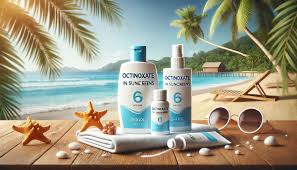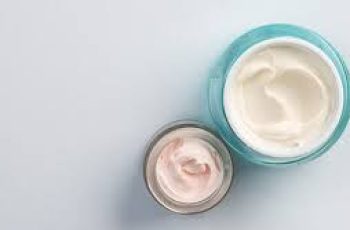
Octinoxate in Sunscreen
As a dermatologist, I believe that any sunscreen is better than no sunscreen at all. However, some sunscreen ingredients are a better choice due to safety, effects on marine life, and which UV rays they block. Octinoxate is often included in sunscreens that are otherwise all mineral sunscreens. Why is this? What is it about octinoxate that makes it enticing for companies to put in SPF even when it is banned in Hawaii and Key West and is on the not clean list for Sephora and Ulta?
In this blog, I will discuss all of the issues, but my ultimate conclusion is- don’t use SPF with octinoxate if you are going to swim in rivers, lakes and oceans.
Chemical Sunscreen Filter : Absorbs UVB rays (280-320 nm)
Enhances UVB Protection : Often combined with zinc oxide and titanium dioxide to provide broad spectrum protection
Potential Downsides : Increases skin absorption of pesticides, generates free radicals, causes inflammation, hyperpigmentation, and acts as a possible photoallergen.
Safety Concerns : Approved by the FDA up to 7.5% but found in human plasma and urine, suggesting systemic absorption and raising questions about long-term safety.
Environmental Impact : Not reef-safe and banned in Hawaii and Key West due to its contribution to coral bleaching and harmful effects on marine ecosystems.
Ingredient Compatibility : Should not be mixed with benzoyl peroxide or low pH vitamin C. Compatible with hyaluronic acid and niacinamide.
What is Octinoxate?
Octinoxate, or octyl methoxycinnamate, is a chemical sunscreen filter that belongs to the salicylate family, which is related to aspirin. It’s widely used in sunscreens to absorb ultraviolet B (UVB) rays from the sun, preventing them from penetrating the skin and causing damage.
What Does Octinoxate Do?
Octinoxate primarily absorbs UV rays, in the range of 280-320 nanometers (nm). It is effective in preventing sunburn and other UVB-induced skin damage. While it offers substantial UVB protection, it does not cover the entire spectrum of UVA rays (320-400 nm), which are responsible for deeper skin damage and photoaging.
Because of its limitations in UVA coverage, octinoxate is often included in formulations with physical blockers like zinc oxide and titanium dioxide. These mineral sunscreens cover the UVA spectrum more effectively, providing broader protection when combined with octinoxate. Zinc oxide, for instance, covers UVA I (340-400 nm) and UVA II (320-340 nm) wavelengths, making this combination particularly effective for comprehensive sun protection.
Octinoxate in Mineral Sunscreen
It is often formulated in combination with physical sunscreens. Although octinoxate does not provide coverage beyond what zinc oxide offers, it is included in formulations with physical blockers like zinc oxide and titanium dioxide for several reasons:
Enhanced UVB Protection: Octinoxate adds an extra layer of UVB protection, which is critical for preventing sunburn.
Formulation Benefits: Octinoxate can improve the texture and spreadability of sunscreen formulations, making them more cosmetically elegant and easier to apply.
Synergistic Effects: Combining chemical and physical filters can enhance the overall effectiveness and stability of the sunscreen, ensuring broad-spectrum protection.
Benefits
Octinoxate offers several benefits, including making a sunscreen broad-spectrum. Here are some benefits listed alphabetically:
Anti-inflammatory : As a salicylate, it can reduce skin inflammation.
Broad-spectrum protection : Enhances coverage against a wide range of UV rays.
Colorless : Does not stain clothes.
Non-comedogenic : Does not clog pores.
Non-stinging : Generally does not irritate the eyes.
Safety
When we talk about whether a sunscreen ingredient is safe or not, it is helpful to divide safety into categories of safe to humans, environmental impact, photostability and to review any regulations on the ingredient.
Safety to Humans
Octinoxate is approved by the FDA for use in sunscreens at concentrations up to 7.5%. It is considered safe for most people, although some may experience irritation or allergic reactions. However, studies have found octinoxate in human plasma and urine, suggesting that it can be systemically absorbed through the skin. This systemic absorption raises questions about its long-term safety and potential effects on human health.
Environmental Impact
There are significant concerns regarding octinoxate’s impact on marine ecosystems. It can accumulate in waterways and is not considered reef-safe, contributing to coral bleaching and other marine life disruptions. This has led to bans in places like Hawaii and Key West, where local legislation aims to protect vulnerable coral reefs.
Photostability
When exposed to UV light, octinoxate can degrade and lose effectiveness, potentially forming free radicals that can age skin. This breakdown can lead to the ingredient becoming a photoallergen, which may cause allergic reactions in some individuals. Its photoinstability underscores the importance of combining it with other stable sunscreen agents to maintain overall product efficacy.
Safety Ratings
The Environmental Working Group (EWG) rates octinoxate as a moderate hazard. The Cosmetic Ingredient Review (CIR) has deemed it safe within current usage concentrations. Despite its approval by the FDA, octinoxate is listed as “not clean” by retailers such as Sephora and Ulta, though it is considered acceptable by Target and Walgreens/Boots. Additionally, octinoxate is not currently listed under California Proposition 65 as a known harmful substance, which includes chemicals that cause cancer, birth defects, or other reproductive harm.
Downsides
Octinoxate has several downsides, which include:
Absorption of Pesticides : Octinoxate may increase the skin’s absorption of pesticides, leading to heightened exposure to harmful chemicals.
Possible Increase in Skin Aging : Upon exposure to UV light, octinoxate can break down and generate free radicals. These free radicals can accelerate skin aging by damaging collagen and elastin fibers.
Inflammation : The free radicals produced upon sun exposure can cause inflammation, leading to skin irritation and sensitivity.
Hyperpigmentation : Free radicals and inflammation can also trigger melanin production, leading to hyperpigmentation and uneven skin tone.
Possible Photoallergen : When exposed to sunlight, octinoxate can degrade and form reactive byproducts, making it a photoallergen. This means it can cause allergic reactions when you wear it in the sun.
Octinoxate-Free Sunscreens
Formulation Issues
Octinoxate is oil-soluble, making it a versatile ingredient in many sunscreen formulations. Octinoxate is typically colorless but can appear yellow and has a mild smell that may be masked by adding fragrance to the SPF.
Compatibility with other Ingredients
When you use products together in a skin care routine, ingredients can have effects on each other. This is why product layering and the order of your skin care routine steps is very important when you build a custom skin care routine.
Octinoxate, while a versatile ingredient in many sunscreen formulations, has specific compatibility issues with other skincare ingredients:
Benzoyl Peroxide : Octinoxate should not be mixed with benzoyl peroxide. The oxidative properties of benzoyl peroxide can cause octinoxate to degrade, reducing its effectiveness and potentially causing skin irritation.
Low pH Vitamin C (Ascorbic Acid) : Mixing octinoxate with low pH vitamin C is not advisable. Vitamin C, particularly in its active form as ascorbic acid, requires a low pH to be effective. This low pH environment can destabilize octinoxate, making it less effective as a UV filter and possibly leading to increased skin irritation.
Hyaluronic Acid : Hyaluronic acid, a powerful humectant, is generally compatible with octinoxate. It helps to hydrate the skin without interfering with the stability or effectiveness of octinoxate.
Niacinamide : Niacinamide, known for its anti-inflammatory and skin-soothing properties, is compatible with octinoxate. It can enhance the overall benefits of a sunscreen formulation by reducing potential irritation and providing additional skin barrier support.
Zinc Oxide : Zinc oxide is a physical sunscreen agent that offers broad-spectrum protection. Combining octinoxate with zinc oxide can enhance the overall UV protection of the sunscreen. Zinc oxide covers the UVA spectrum more effectively, complementing the UVB protection provided by octinoxate.
Research
Octinoxate has been shown to impact various aspects of skin health and hydration in human keratinocytes. A recent study (Ref 3) of the effects of octinoxate on human keratinocytes showed the following:
Reduced Hyaluronic Acid
Octinoxate reduced the extracellular contents of hyaluronic acid (HA) in human HaCaT keratinocytes. This effect was partially mediated by the phosphatidylinositol 3-kinase (PI3K) pathway, as a PI3K inhibitor partially restored the decreased HA levels caused by octinoxate. Additionally, octinoxate differentially regulated the mRNA expression of HA synthase (HAS) and hyaluronidase (HYAL) enzymes, which are responsible for HA synthesis and degradation, respectively.
Oxidative Stress
Regarding oxidative stress, octinoxate decreased the accumulation of reactive oxygen species (ROS) by activating the PI3K pathway, suggesting a potential antioxidant effect. This indicates that octinoxate might help mitigate oxidative damage in skin cells. (Note that when octinoxate is exposed to UV light it can form free radicals.)
Skin Hydration
Octinoxate increased the expression of Toll-like receptor 4 (TLR4), which can be activated by low molecular weight HA fragments and is upstream of HAS1 and HAS3 expression in keratinocytes. However, the study did not report any specific effects of octinoxate on aquaporin 3 (AQP3) or CD44 expression.
AQP3 is a membrane water channel protein that helps maintain water content in the epidermis, while CD44 is the predominant cell surface receptor for HA and is associated with skin hydration.
Summary
Despite its downsides, octinoxate is prevalent in many sunscreens because it provides essential UVB protection that many mineral sunscreens lack. UVA rays cause significant skin damage, including aging and cancer, and mineral filters often do not cover these wavelengths fully. Therefore, combining octinoxate with zinc oxide or titanium dioxide ensures comprehensive protection.
If you prefer octinoxate-free sunscreens, look for mineral options that rely on zinc oxide or titanium dioxide alone. For personalized sunscreen recommendations, consider taking the Baumann Skin Type quiz to find products tailored to your specific skin needs.


